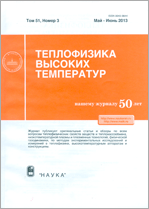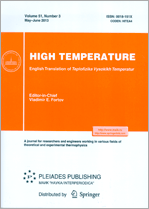|
|
Teplofizika vysokikh temperatur, 2007, Volume 45, Issue 4, Pages 609–631
(Mi tvt1121)
|
 |
|
 |
This article is cited in 17 scientific papers (total in 17 papers)
Review
Thermophysical properties affecting safety and performance of nuclear fuel
C. Ronchi
European Commission, Joint Research Centre, European Institute for Transuranium Elements, Karlsruhe, Germany
Abstract:
Improvement of the nuclear fuel exploitation has been one of the main objectives of reactor technology during the last decades. Today, in view of a sustainable nuclear energy production, development of advanced reactors re-proposes the choice of innovative fuel cycle concepts, in a context of greater expectations and more stringent requirements. From the experience gained in the past, a fuel research and development strategy can be devised, by which selected physical properties are taken as in-pile fuel performance indices.
Uranium dioxide, by far the most important fuel used in power plants, proved from the very beginning to have good design-related properties as well as an excellent resistance to radiation damage. Therefore, increasingly higher performance was demanded concerning lifetime in current power reactors, maximum burn-up and safe operation. Yet, fuel test campaigns carried out in the last years have shown that at very high burn-ups, conditions are attained where radical restructuring processes take place in the $\text{UO}_2$ lattice, irrespective of the irradiation regime of the fuel rods. This has led to an intense research activity on the effects of radiation damage on the thermophysical properties of the fuel. Energy and matter transport processes were found to be strongly affected by reactor irradiation, the in-pile performance of the fuel being governed by self-healing processes that can be only in part controlled.
Furthermore, in the severe reactor accidents the fuel high temperature thermodynamic properties must comply with safety requirements to be satisfied under conditions which have been not yet explored. Therefore, their description and formulation for applications in different scenarios represent one of the main goals of the future research on advanced fuels.
Received: 08.02.2006
Citation:
C. Ronchi, “Thermophysical properties affecting safety and performance of nuclear fuel”, TVT, 45:4 (2007), 609–631; High Temperature, 45:4 (2007), 552–571
Linking options:
https://www.mathnet.ru/eng/tvt1121 https://www.mathnet.ru/eng/tvt/v45/i4/p609
|


| Statistics & downloads: |
| Abstract page: | 234 | | Full-text PDF : | 233 |
|





 Contact us:
Contact us: Terms of Use
Terms of Use
 Registration to the website
Registration to the website Logotypes
Logotypes








 Citation in format
Citation in format 
